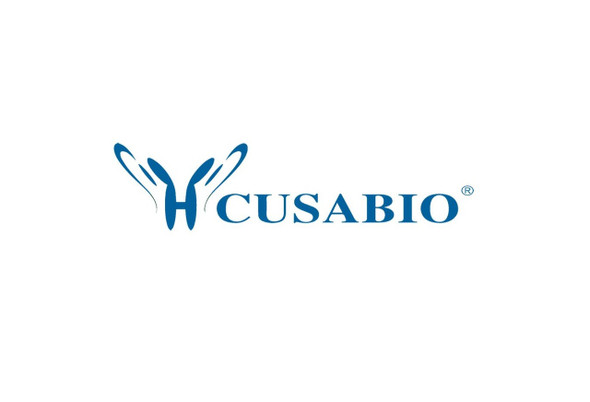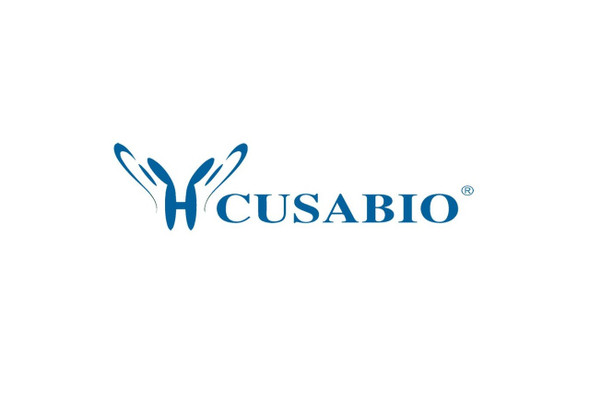Cusabio Virus & Bacteria Recombinants
Recombinant Leishmania infantum Thymine dioxygenase JBP1 (JBP1), partial | CSB-EP390102LOF
- SKU:
- CSB-EP390102LOF
- Availability:
- 3 - 7 Working Days
Description
Recombinant Leishmania infantum Thymine dioxygenase JBP1 (JBP1), partial | CSB-EP390102LOF | Cusabio
Alternative Name(s): J-binding protein 1;Thymidine hydroxylase JBP1
Gene Names: JBP1
Research Areas: Epigenetics and Nuclear Signaling
Organism: Leishmania infantum
AA Sequence: SCIACLDGQFKGLALAFDDFGINVLMQPRDVMIFDSHHFHSNTEVELSFSGEDWKRLTCVFYYRAALGEPASYAEYRRRLEKSKQDTSFTPVVSNVRVKENGTNLNRPSPVYPIFLSPFWVPMVAHCLQHCASEAQCVHDAMTADGSRLAEVMFGEPLSTSDGIPLRGEEEKLKANSDSASRPLSRLGGFSETNLMVSTAVEKKKYLNSEFLSHFISAQLLDMWKQARGKWLELVGREWTHMLALNPERKDFLWRNQSEMNSAFFDLCEVGKQVMLGLLGKEAALPKEEQAFWTMYAVHLNAACAEELNMPHVAMSLRKLNVKLKDFNFGGTRYFKDMPPEEQKRRMERKQRIEEARRHGMSSGAHEKRANWLTNDSFDYQTEDCVFDYAQHKWVPPALHA
Source: E.coli
Tag Info: N-terminal 10xHis-V5-tagged
Expression Region: 200-600aa
Sequence Info: Partial
MW: 53.4 kDa
Purity: Greater than 85% as determined by SDS-PAGE.
Relevance: Dioxygenase that catalyzes the first step of DNA base J (beta-d-glucosyl-HOMedU) biosynthesis by converting thymine to 5-hydroxymethyluracil (HOMedU). DNA base J is a hypermodified thymidine residue found in the genome of kinetoplastid parasites, which is localized primarily to repetitive DNA, namely the telomeres, and is implicated in the regulation of antigenic variation. Also specifically binds to base J-containing DNA (J-DNA). Involved in propagation and maintenance of DNA base J synthesis initiated by JBP2 by specifically binding already synthesized DNA base J and propagating J synthesis. Thymine dioxygenase activity and J-DNA-binding are independent functions (By similarity).
Reference: "Comparative genomic analysis of three Leishmania species that cause diverse human disease." Peacock C.S., Seeger K., Harris D., Murphy L., Ruiz J.C., Quail M.A., Peters N., Adlem E., Tivey A., Aslett M., Kerhornou A., Ivens A., Fraser A., Rajandream M.-A., Carver T., Norbertczak H., Chillingworth T., Hance Z. Berriman M. Nat. Genet. 39:839-847(2007)
Storage: The shelf life is related to many factors, storage state, buffer ingredients, storage temperature and the stability of the protein itself. Generally, the shelf life of liquid form is 6 months at -20?/-80?. The shelf life of lyophilized form is 12 months at -20?/-80?.
Notes: Repeated freezing and thawing is not recommended. Store working aliquots at 4? for up to one week.
Function:
Involvement in disease:
Subcellular Location:
Protein Families:
Tissue Specificity:
Paythway:
Form: Liquid or Lyophilized powder
Buffer: If the delivery form is liquid, the default storage buffer is Tris/PBS-based buffer, 5%-50% glycerol. If the delivery form is lyophilized powder, the buffer before lyophilization is Tris/PBS-based buffer, 6% Trehalose, pH 8.0.
Reconstitution: We recommend that this vial be briefly centrifuged prior to opening to bring the contents to the bottom. Please reconstitute protein in deionized sterile water to a concentration of 0.1-1.0 mg/mL.We recommend to add 5-50% of glycerol (final concentration) and aliquot for long-term storage at -20?/-80?. Our default final concentration of glycerol is 50%. Customers could use it as reference.
Uniprot ID: A4HU70
HGNC Database Link: N/A
UniGene Database Link: N/A
KEGG Database Link: N/A
STRING Database Link: N/A
OMIM Database Link: N/A









